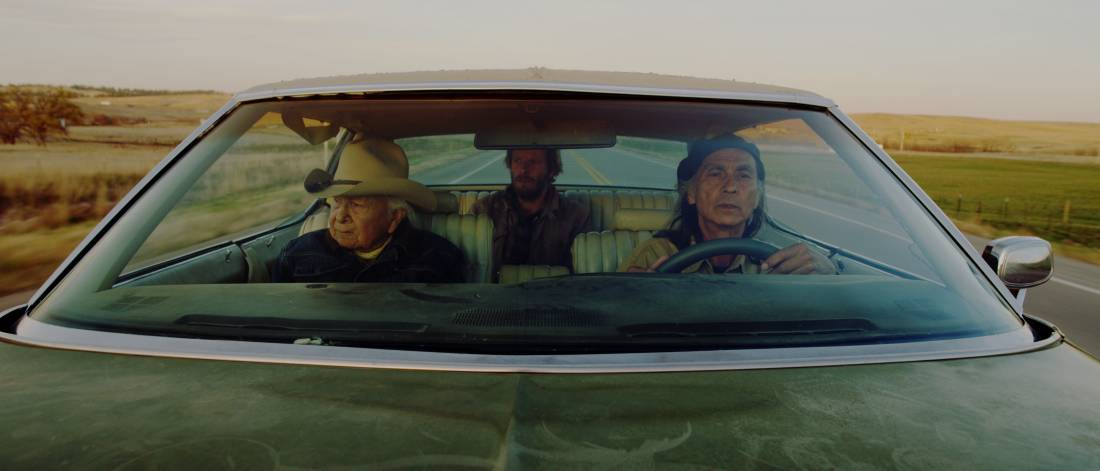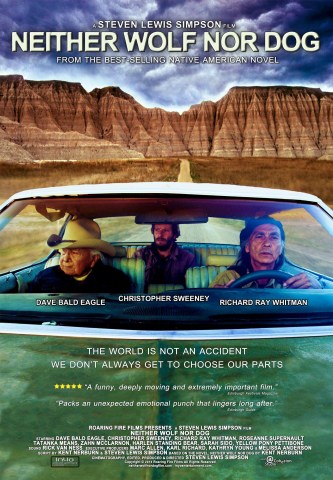
Neither Wolf Nor Dog shows that films don’t need a large budget to be culturally important.
On Nov. 25, the Roxy Theatre screened the acclaimed 2016 film Neither Wolf Nor Dog. The film proved to be a powerful, important and timely movie about modern relationships between American colonizers and the colonized Lakota people.
Based on Kent Nerburn’s award-winning semi-autobiographical novel of the same name, the film sees a Lakota elder, Dan — played by David Bald Eagle — invite Nerburn — played by Christopher Sweeney — to his community to write a book.
Throughout the film, Nerburn struggles to write Dan’s book, as he does not have a meaningful connection to the community, but with Dan’s guidance and friendship, Nerburn succeeds in his task. While the film may be set in the U.S., its themes and content are relevant to all Canadian viewers, as we live in a country split between the pain of the past and the guilt of the present.
Impressively, Neither Wolf Nor Dog was filmed in just 18 days and was completed without much in the way of financial support — they even had to crowd-source funds for distribution once the film was finished.
However, film director Steven Lewis Simpson shared with the Sheaf, via email, that the low budget and breakneck speed of filming actually benefited the movie.
“The budget was tiny — as was the crew — but that worked in our favour in a way that was more important than what we were missing due to budget limitations,” Simpson said. “If there was a big film crew and film machinery — not just two crew members and the actors — then [the scenes] wouldn’t have the intimacy.”
One such intimate moment is the film’s climax when Dan, Nerburn and Grover — played by Richard Ray Whitman — arrive at Wounded Knee Creek, the site of the 1890 massacre where hundreds of Lakota men, women and children were murdered.
Simpson reveals that he discarded the script during this scene and gave Bald Eagle the chance to talk, through the voice of his character, about how the Wounded Knee Massacre affected his people.
“The scene was more powerful than I could ever have dreamt,” Simpson said. “At the end, Dave turned to Christopher Sweeney … and said, ‘I’ve been holding that in for 95 years.’”
This actor-based approach was the cornerstone of the film for Simpson, as he hoped to portray each actor’s Indigenous heritage in a sensitive and appropriate way, instead of adhering to clichés.

“The big mistake made by Hollywood whenever they film Indigenous characters is they fail to set them up as individuals in the same way that any other character on screen would be,” Simpson said. “If I saw any of my characters through a cultural lens, I would be [thinking] too narrow. We have so many other aspects to our identity, too.”
Overall, Simpson notes that he is pleased with the film’s reception.
“I’ve continuously had amazing reports from a lot of Indigenous people who have seen the film. In addition to having greatly enjoyed the movie, they reported being very gratified by seeing that the white folks in the audience were rooted to their seats for a while after the lights came up after the end credits,” Simpson said.
More than anything, Simpson attributes Neither Wolf Nor Dog’s success to Bald Eagle’s stunning performance.
“For those 110 minutes, Dave Bald Eagle’s magic had opened [the audience’s] hearts deep enough that they perhaps listened in a way they had never done before,“ Simpson said. “Empathy always opens doors and never closes them.”
—
Isabelle Cook
Photo: Steven Lewis Simpson / Supplied